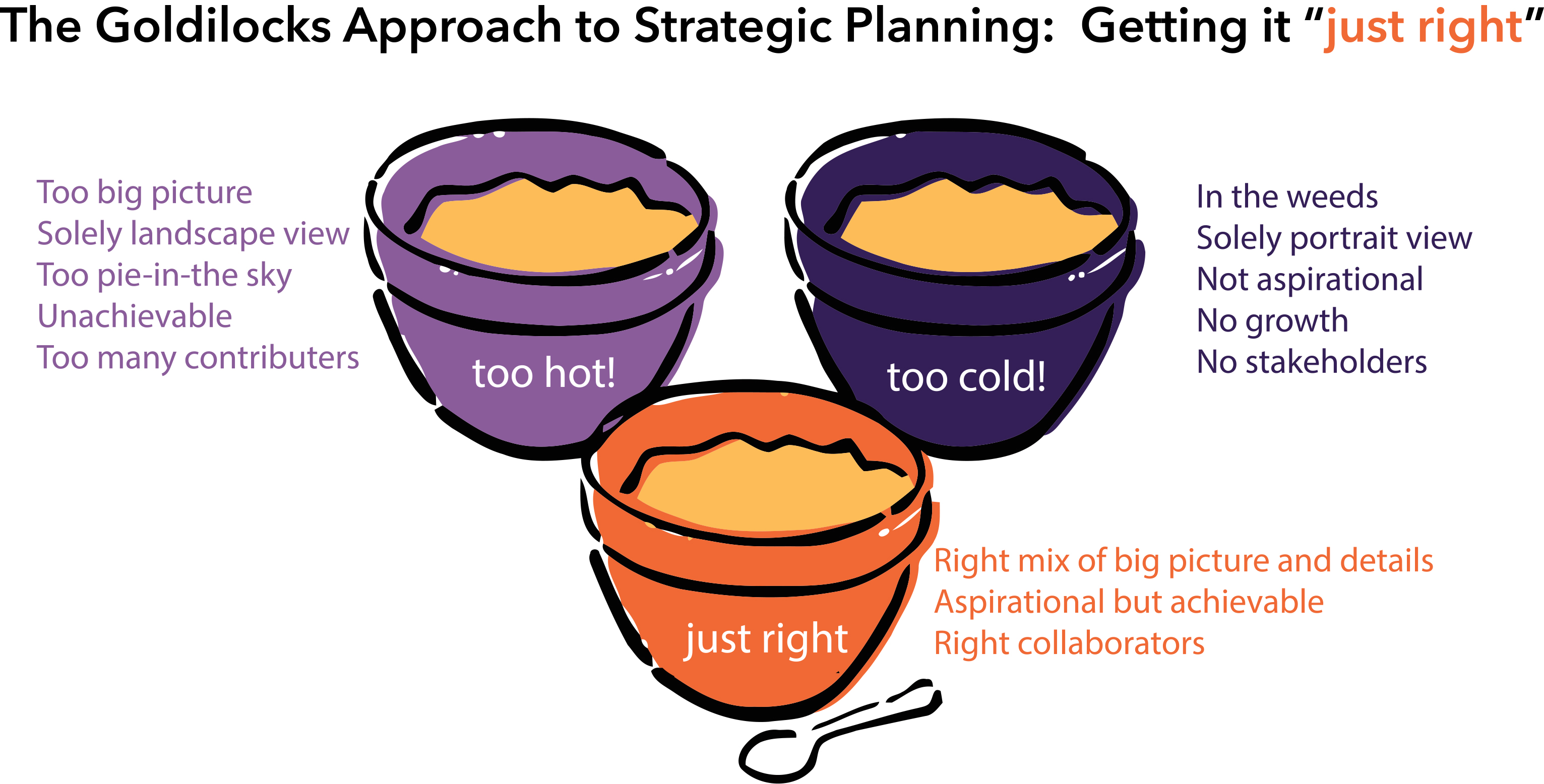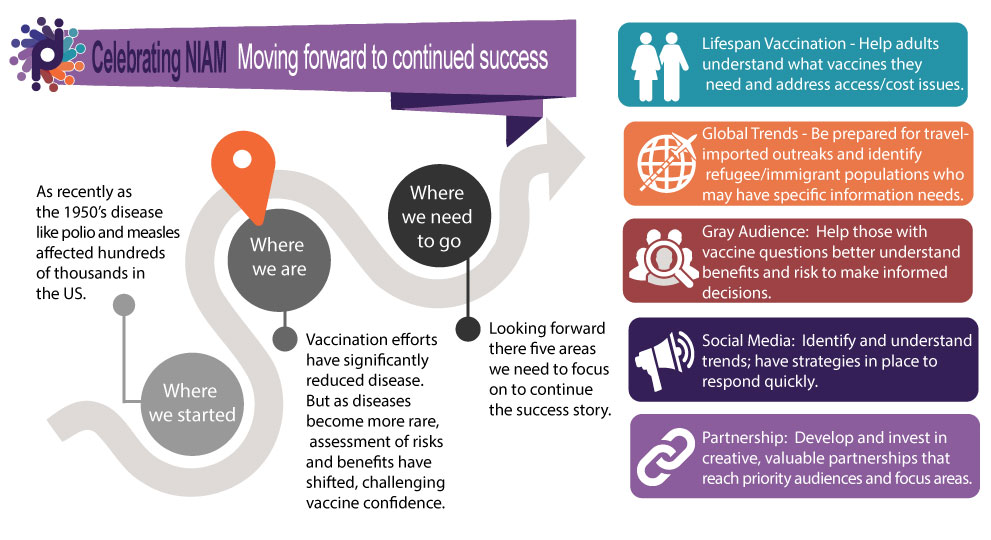We all know the story of Goldilocks — she tries porridge that is too hot and too cold, sleeps in a bed too soft and too hard, until finding both the porridge and bed that is just right. Turns out that we can take a lesson from Goldilocks when it comes to strategic planning — no, it’s not her odd B&E tendencies but her search for the “sweet spot.” That’s the key to successful strategic planning. Unfortunately, a lot of us are making 3 mistakes that make it hard to find that sweet spot:
- Not seeing the big picture…or seeing only the big picture. In planning it’s important to see the big picture in order to ensure planning is mission-centric, appropriate to the current climate, etc. But by only focusing on a “landscape” view, a plan lacks the details to ensure success. Conversely, by focusing solely on a “portrait” view, a plan is created in a vacuum with no integration to the mission, realities, organizational culture or ability to support and get support from other existing efforts.
Ensure your planning has its foundation in important big picture issues like mission and organizational goals, but once those are laid out — focus on the details, making sure they directly correlate to the big picture.
- Not thinking big enough…or thinking too big. Often clients will start a strategic planning exercise with their list of limitations and start from there. They think that if they focus on what realistically can be done the plan will be successful. Well, yes…and no. Yes, the plan will likely be achievable but it will also likely not push for growth or identify opportunities. However, pie-in-the-sky thinking isn’t helpful either. It’s one thing to envision what your organization could do with a substantial increase in funding but creating a plan is contingent on a lottery-size windfall is an exercise in writing fiction, not planning.
Be aspirational enough to identify areas of growth and then build the strategy so you have a blueprint to achieve your goals. Let your limitations inform your planning, not define it. Don’t let creativity morph into scope creep — Keep your mission and programs in mind! - Not including stakeholders…or including everyone. A strategy can’t succeed if the right people aren’t at the table. Identify your stakeholders and make sure they part of the process. But, often in the spirit of “buy in,” many organizations make strategic planning akin to a team sport. Success depends on the right people being at the table, not all the people being at the table. Without the stakeholders, it will be hard to get the organizational support to implementation a strategy. With everyone at the table, it will be hard to sift through so many voices to hear organizational priorities.
Identify who your stakeholders are and engage them early in the process. Tailor your planning schedule to make sure they can be actively involved. Find ways to solicit information from others to get “on the ground” realities and make them feel included.
Work to find your organization’s sweet spot – identify realistic growth, achievable aspiration and critical stakeholders as you move forward — it will go a long way to making sure your strategic planning “just right.”






